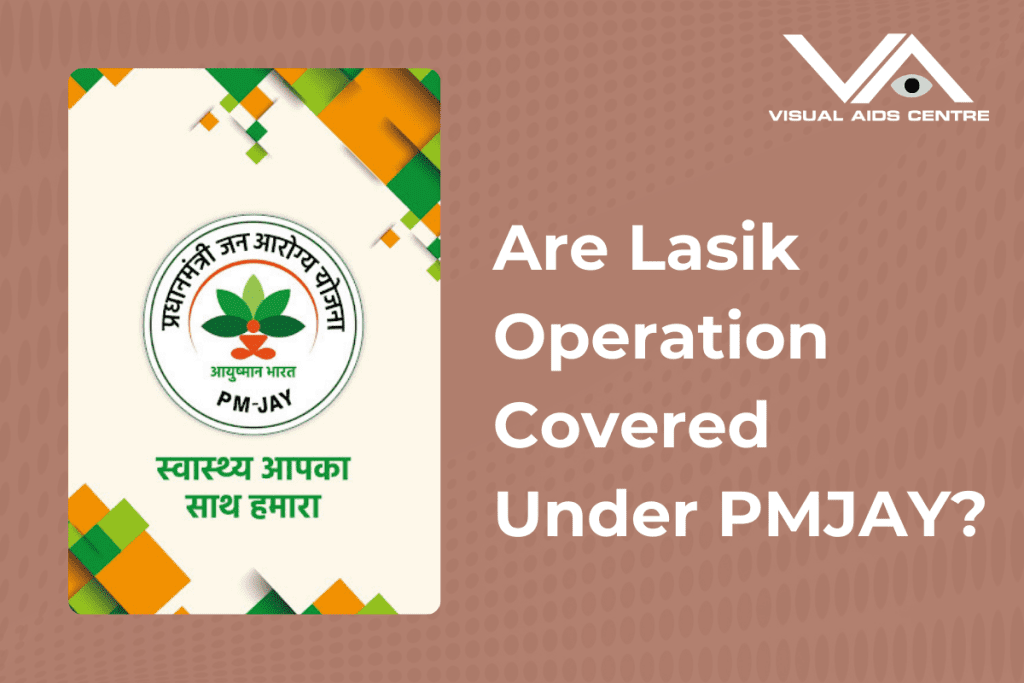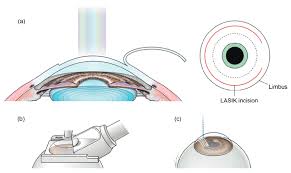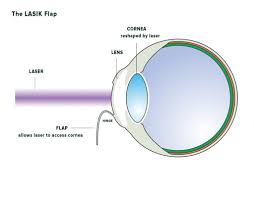Table of Contents
ToggleIn the current landscape of healthcare, understanding what medical procedures are covered by insurance and government schemes can be crucial for patients and medical professionals alike.
The Pradhan Mantri Jan Arogya Yojana (PMJAY), also known as Ayushman Bharat, is one of India’s most ambitious healthcare initiatives, providing coverage to millions of economically disadvantaged citizens for a variety of health services.
One common question among those considering corrective eye surgery is whether LASIK operations are covered under the PMJAY scheme. This article aims to explore this topic in-depth, providing clarity for health enthusiasts, medical professionals, and the general public.

Understanding LASIK Surgery
Before we address the specifics of coverage under PMJAY, let’s take a brief look at what LASIK surgery entails. LASIK (Laser-Assisted In Situ Keratomileusis) is a popular elective surgery used to correct vision in people who are nearsighted, farsighted, or have astigmatism. It involves reshaping the cornea so that light entering the eye is properly focused onto the retina, resulting in clearer vision.
LASIK is widely sought after because it offers a more permanent alternative to glasses or contact lenses. However, it is considered a cosmetic or elective procedure rather than a medical necessity.
PMJAY and Its Coverage
PMJAY is primarily designed to cover essential healthcare needs and major illnesses. Its coverage extends to over 1,500 medical packages, including surgeries, hospitalization, and follow-up care for a wide range of medical conditions. The scheme is a critical component of India’s healthcare system, offering financial protection to underserved communities and helping to prevent catastrophic health expenditures.
By design, PMJAY focuses on treatments that are considered medically necessary. This includes procedures for conditions that significantly impact an individual’s quality of life or pose a serious risk to health. Examples include cancer treatments, cardiac surgeries, kidney transplants, and other life-saving interventions.
Why LASIK is Not Covered Under PMJAY?
Considering the nature and objectives of PMJAY, LASIK surgery does not fall within the scope of the scheme. Here are the primary reasons why:
1. Elective Nature of LASIK
LASIK is commonly classified as an elective procedure. While it improves vision, it is not considered necessary for maintaining eye health or preventing vision loss. People who undergo LASIK typically do so to reduce their dependence on corrective lenses, which makes the surgery optional rather than essential.
2. Cosmetic Classification
In many healthcare systems, including PMJAY, procedures that are primarily cosmetic are not covered. This distinction is significant because cosmetic procedures are often sought for personal or aesthetic reasons rather than to address a medical condition. Since LASIK is often pursued for lifestyle convenience rather than necessity, it falls into this category.
3. Resource Allocation
PMJAY aims to allocate resources effectively to maximize the health benefits for its beneficiaries. Covering elective surgeries like LASIK could divert funds from more critical healthcare needs that directly impact health outcomes.
Alternative Funding Options for LASIK
For individuals interested in LASIK who are not covered by PMJAY, several alternative funding options may be available:
1. Private Health Insurance
Some private health insurance plans offer partial or full coverage for LASIK surgery. It’s important to review policy details carefully, as coverage varies widely between providers and plans. Some insurers may require that the surgery be deemed medically necessary to qualify for coverage.
2. Medical Loans or Financing
Several clinics offer financing plans that allow patients to pay for LASIK in instalments. Medical loans can also be an option for those who prefer to spread the cost over time. Interest rates and terms will vary, so it is advisable to compare options.
3. Employer Benefits
Certain employers offer vision benefits that include LASIK as part of their employee wellness programs. Employees should check with their HR departments to see if such benefits are available.
Making an Informed Decision
Determining the appropriateness of undergoing LASIK surgery entails a careful consideration of several factors:
1. Consultation with an Eye Specialist
Before choosing LASIK, it is important to have a comprehensive eye examination and consultation with a qualified ophthalmologist. They can evaluate your eligibility for the procedure and engage in a discussion regarding the potential risks and benefits.
2. Understanding Financial Costs
Prospective patients should be fully aware of the financial commitment involved in LASIK surgery, including the cost of the procedure itself, follow-up visits, and any potential post-operative care.
3. Evaluating Long-term Needs
Consider how LASIK fits into your long-term vision goals. While it can reduce dependency on glasses or contacts, LASIK does not prevent the natural ageing process of the eye, and some individuals may still require vision correction at some point in the future.
Parting Thoughts
While LASIK offers a promising solution for individuals looking to enhance their vision without corrective lenses, it remains outside the coverage of PMJAY due to its classification as elective surgery. However, a variety of financing and insurance options exist for those interested in pursuing this procedure independently.
For those considering LASIK, understanding the benefits and limitations of your health coverage is crucial for making an informed choice. Engaging in thorough research, consulting with medical professionals, and exploring all available financial avenues will provide the clarity needed to decide whether LASIK is right for you.













